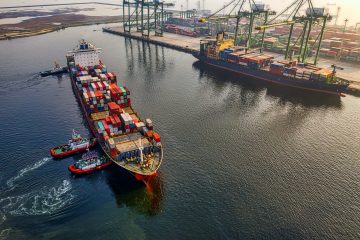These last few months I have been blessed to learn many cool and interesting skills and, through my job as a research technician at the University of Liverpool, have been able to apply them to the real world in many cool places. From learning to fly drones to biology lab skills, the breadth of my learning has been wide. One of the more niche and interesting skills I learned, however, was the ability to climb trees. But why learn to climb trees, what did I learn, and how was I going to apply this knowledge? I will discuss this and more below!
Why climb trees?
Firstly, I will talk about the motivations and reasons behind learning this niche skill. The main motivation for taking this course and learning to climb trees was to support a research trip to French Guiana focused on collecting hyperspectral data in the amazon rainforest through the use of drones and spectral sensors. This was done in collaboration with FSF (Field spectroscopy facility) which is a NERC (Natural environment research council) facility designated to supporting UK researchers with equipment and expertise. I talk more about the specifics of the trip in another article which you can access here if you are interested! Ok back to climbing trees.

But why climb trees if we’re going to French Guiana to fly drones? Well, there’s a couple reasons for that. The first being that when it comes to flying drones, visual line of sight (vlos) must be maintained at all times when operating the drone and is a legal requirement to fly in the EU (which French Guiana falls under despite being in South America). Being able to climb trees would, therefore, allow the team to pilot the drone while in the forest while still being able to maintain vlos.
The second reason for climbing trees while in the amazon was to collect leaf samples to analyse back at camp. In addition to the hyperspectral drone data being collected on the canopy of the Amazon, individual leaf spectra of specific species were also going to be collected using an ASD (analytical spectral device) which collects solar reflectance, radiance, and irradiance measurements. The trees in the Amazon are tall and being able to climb them would allow the team to access leaves closer to the top of the canopy and develop a more robust and variable data set of spectral data.

What did we learn - Bristol
The first leg of our tree climbing experience started in Bristol where the course was held. It took place at Ashton court estate over a week and was delivered by James Aldred who is an Emmy award-winning wildlife photographer and professional tree climber who has worked for companies such as the BBC and with people such as David Attenborough. He is the leading expert on rigging trees for use in other industries and was definitely the best person to teach us for our trip.

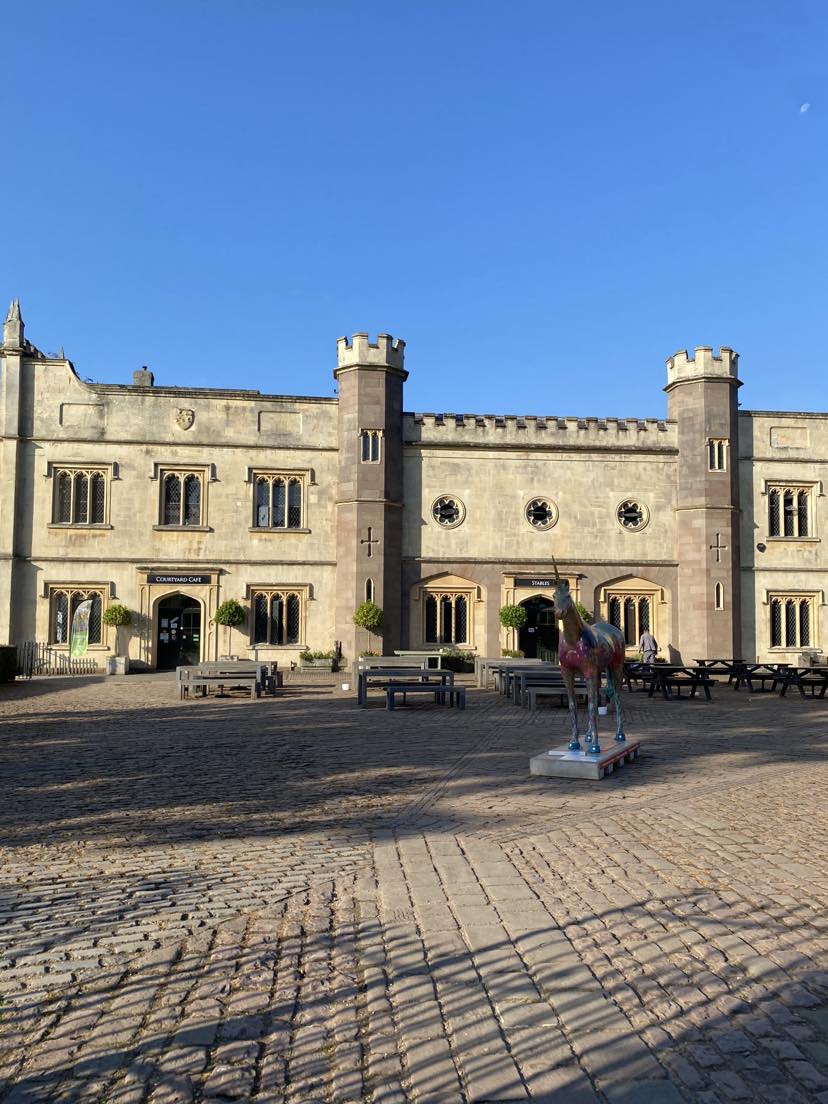
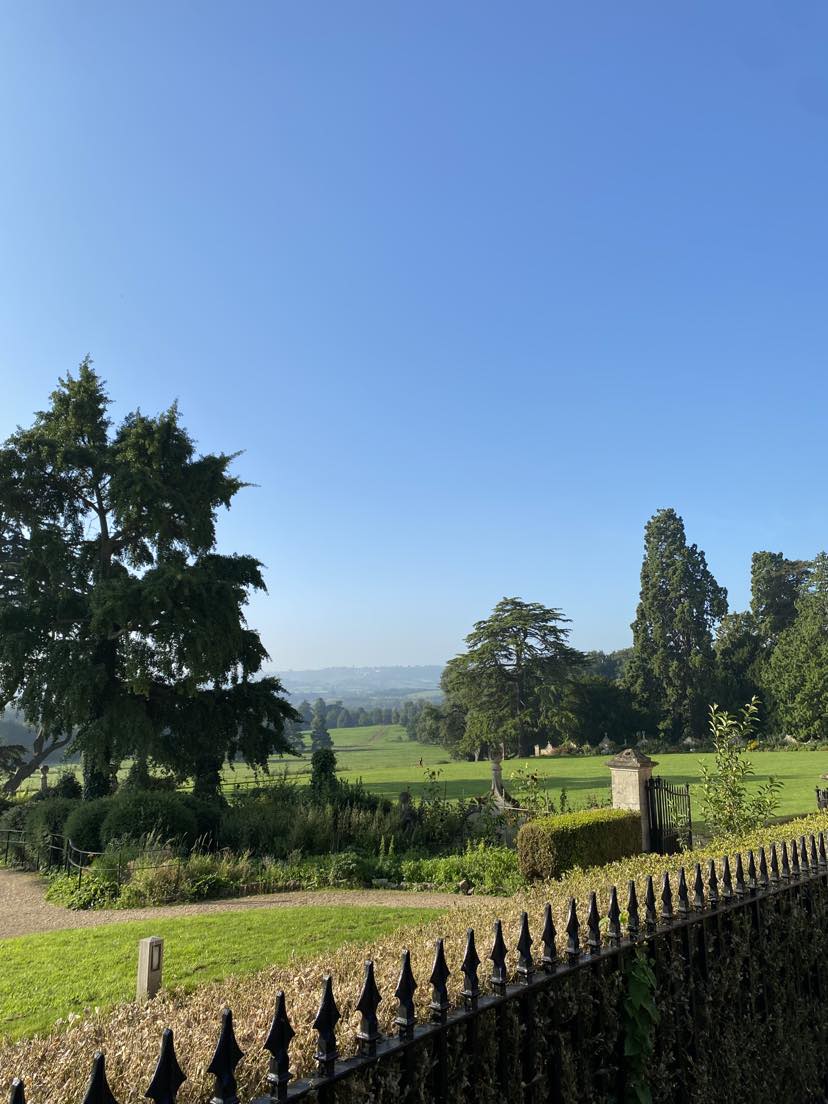
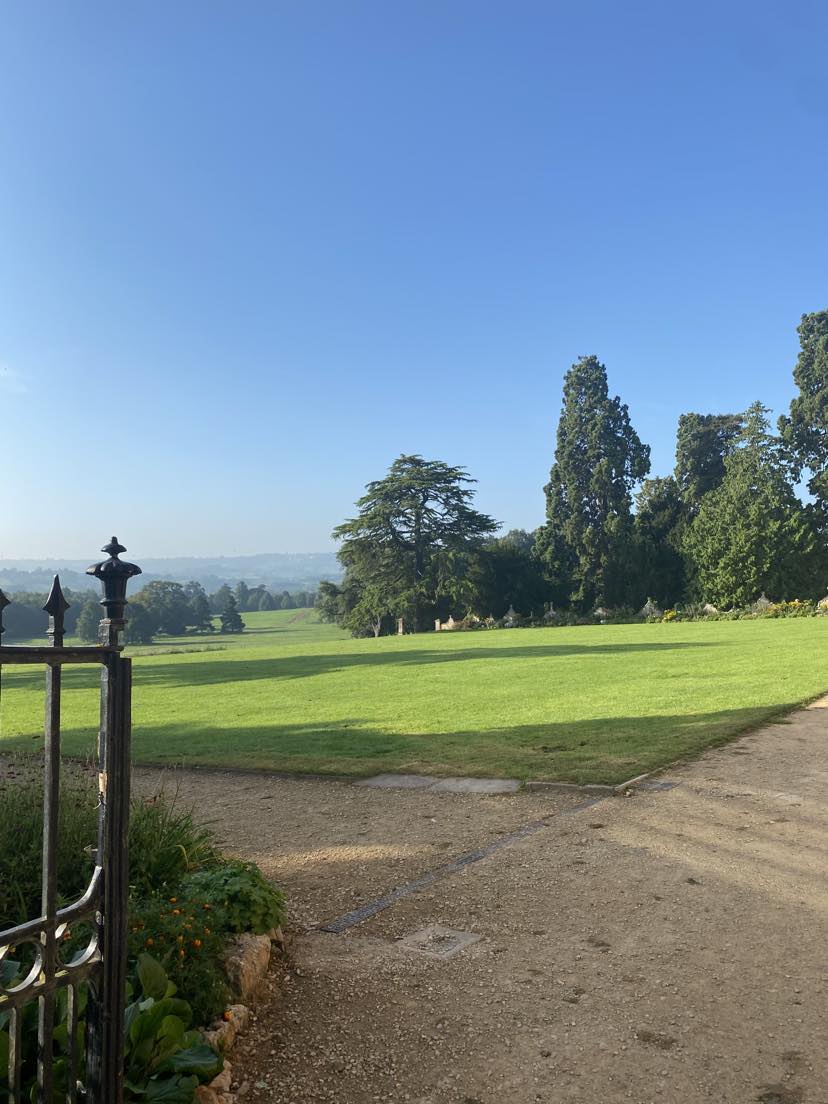
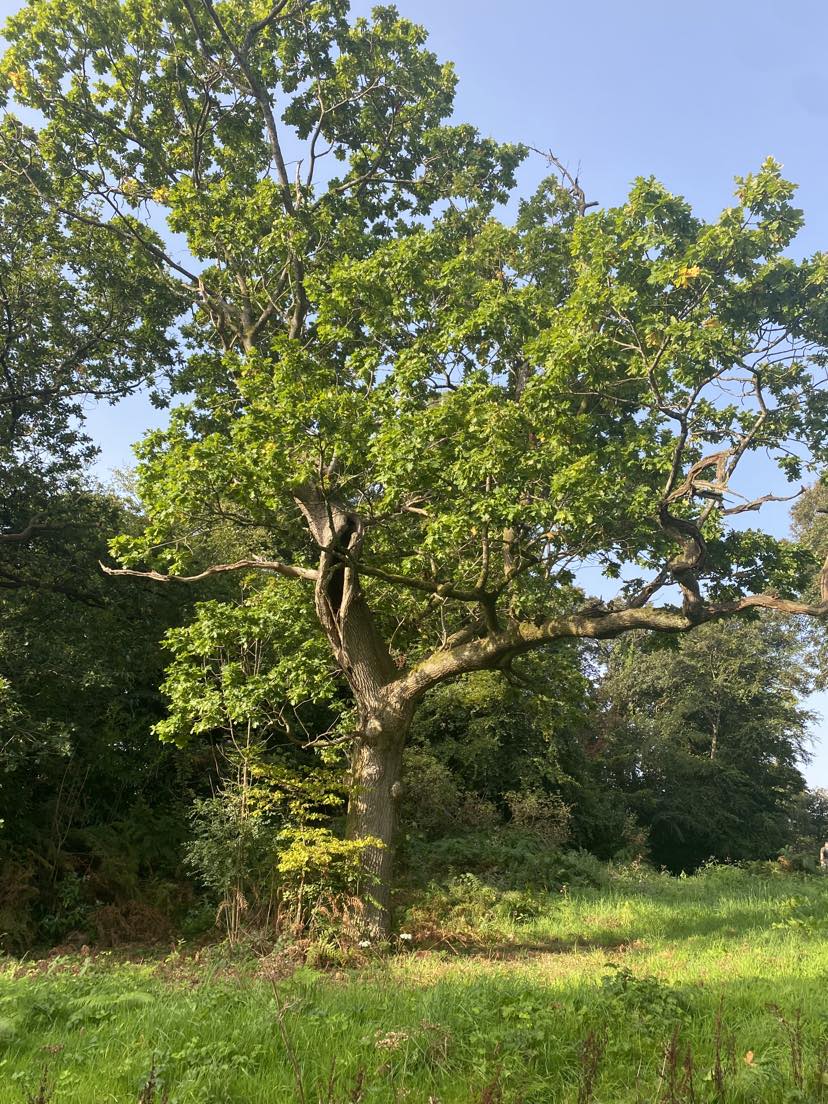
Our group consisted of myself, Freddie (the lead researcher and the person who’s trip we were supporting), and two members from the FSF team who would be the designated pilots and operators of the drone while we were out in French Guiana.
On the course we learned about the different kit we would be using and how to properly assemble and wear it, various types of knots and when and how to use them, how to properly rig up a tree for safe climbing and how to choose which tree to climb, and of course how to climb. James showed us the proper technique to using the ropes, explained the rope system we were using, and taught us the three most common manoeuvres we would potentially have to do when climbing trees for ourselves out in the field which included passing knots, rope-to-rope transfers, and performing a snatch rescue of someone stuck in the ropes at height.
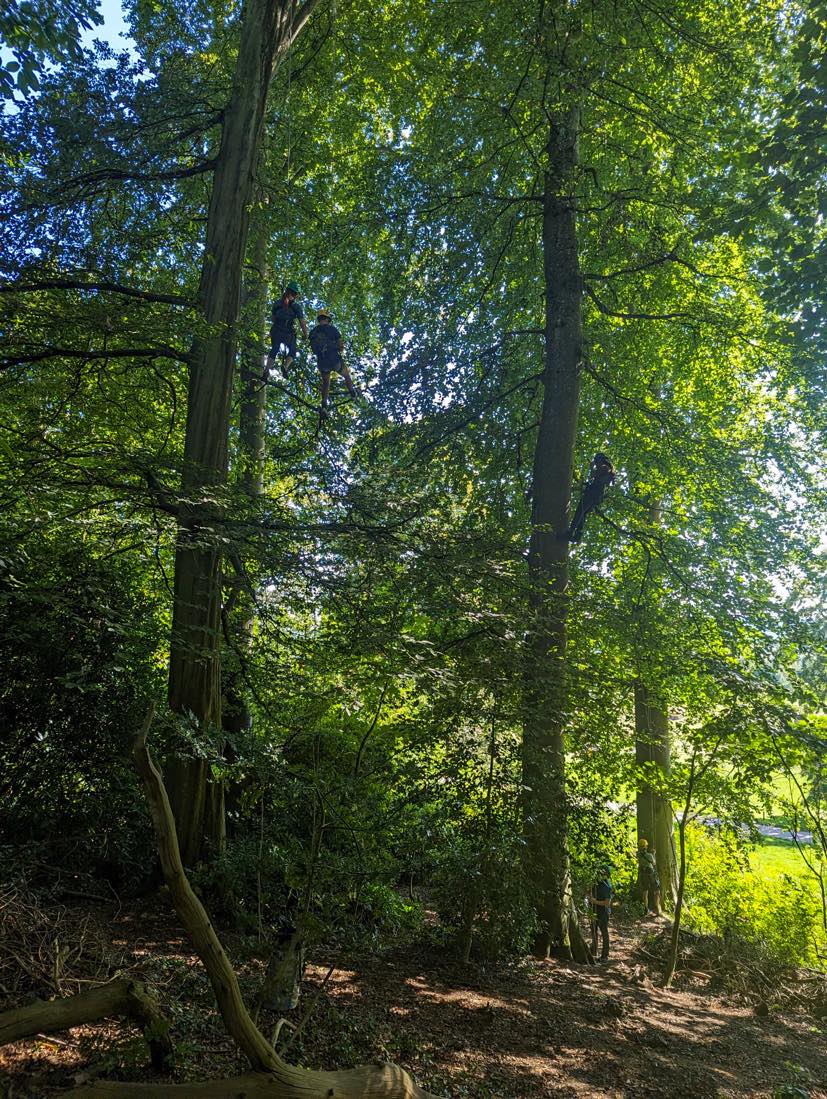
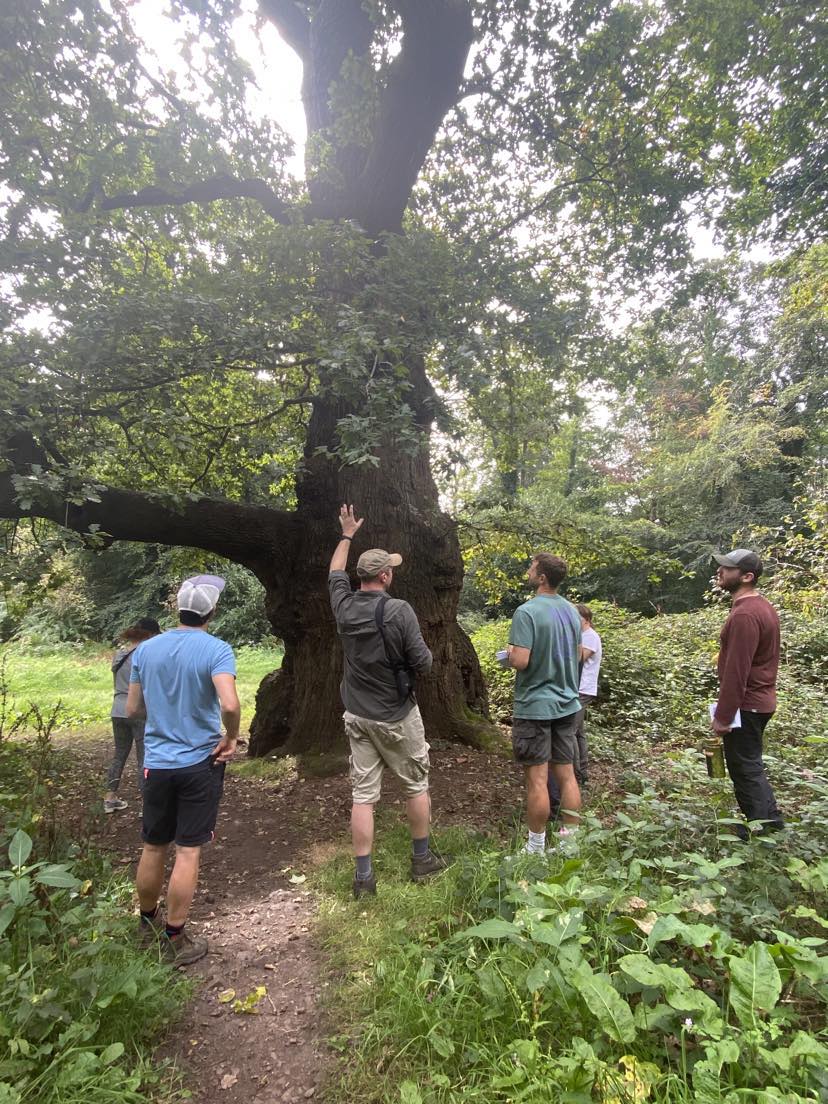



How we used it – French Guiana
Ok so we’ve just spent a week in Bristol learning how to rig and climb trees, practicing the movements, and taking an exam to earn our certificate. Now it was time to use our newly found skills to do some science in the Amazon…the very next week…by ourselves…without the help of James….having just learned how to do it….
Now that does sound like a recipe for problems but in reality it worked quite well and we successfully rigged and climbed multiple trees! In French Guaina we stayed at two different research stations and worked in two different sites to collect samples and data. Those being Paracou and Nouragues.
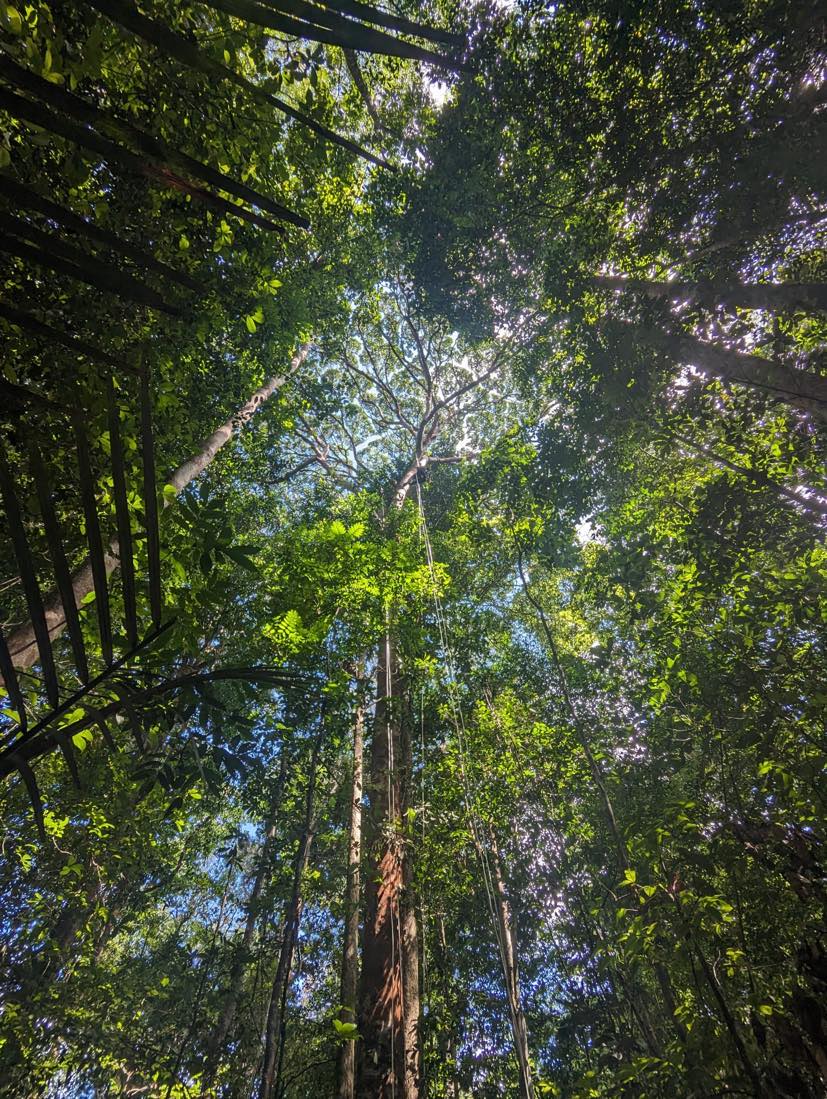
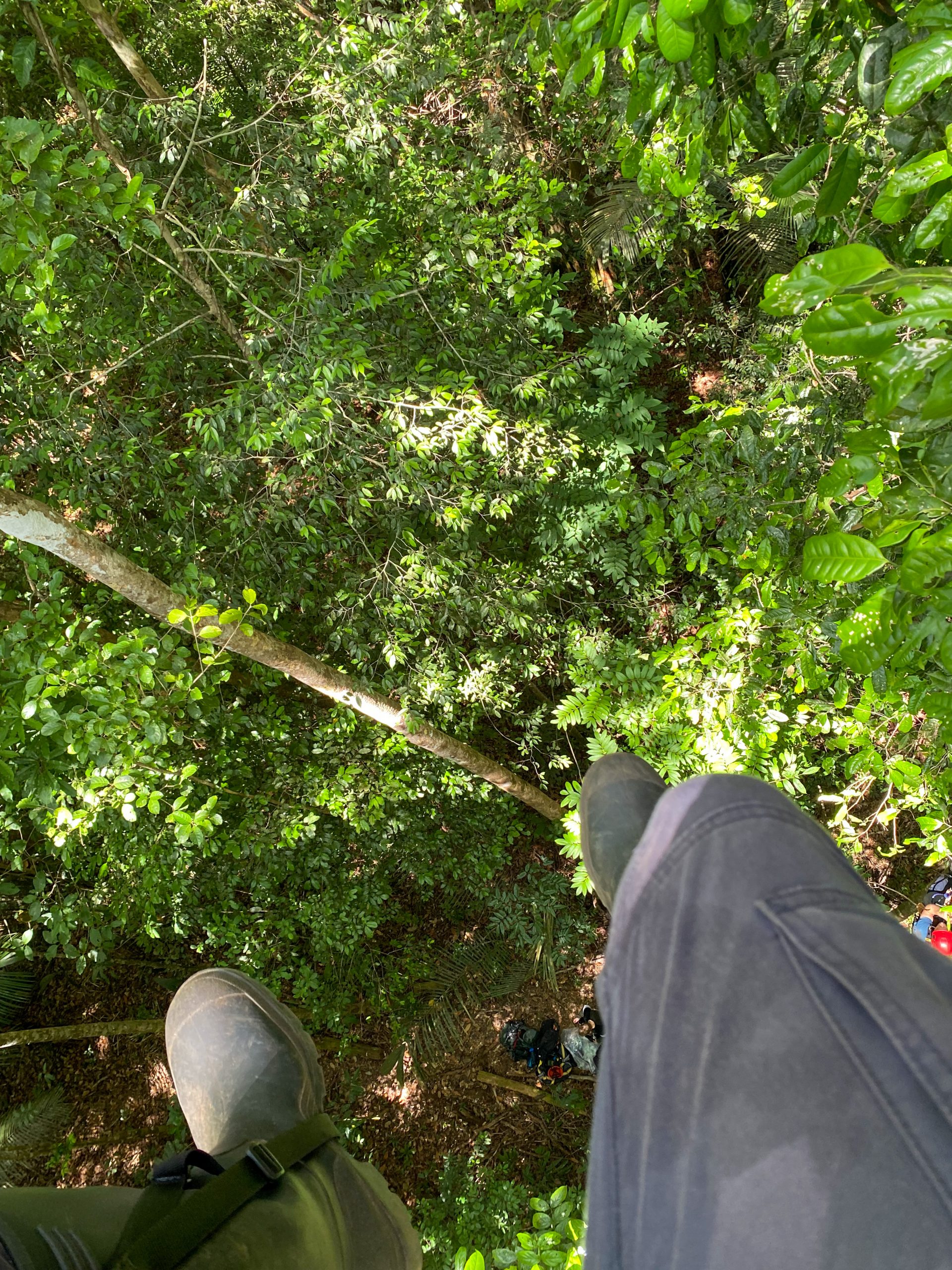
Paracou
The first tree we climbed was in Paracou and, admittedly, it took us a decent amount of time to get it ready for climbing as this was our first time doing it by ourselves. By our last tree towards the end, however, we were rapid. The areas of study in both field sites consisted of plots which contained marked and known trees for research. The areas were naturally occurring and allowed to grow freely, but the trees within the area had been measured for their diameter and had been numbered and tagged with their species, number, size, and other identifying factors being recorded on the field stations data base which we were able to access. For our climbing we focused mainly in these plots and stuck to areas with tall trees and trees which were surrounded by suitable anchor points (surrounding trees that were strong and healthy).
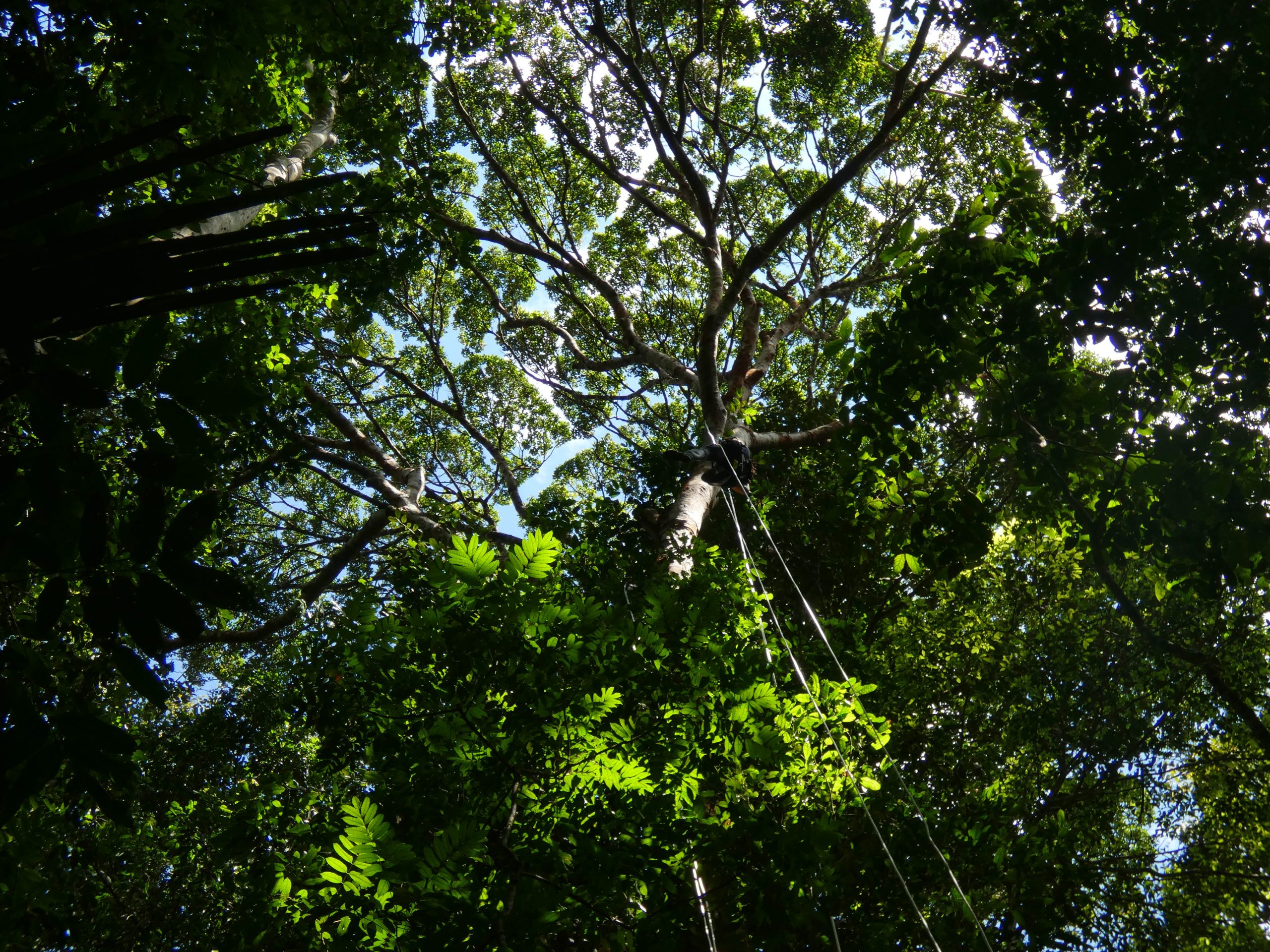
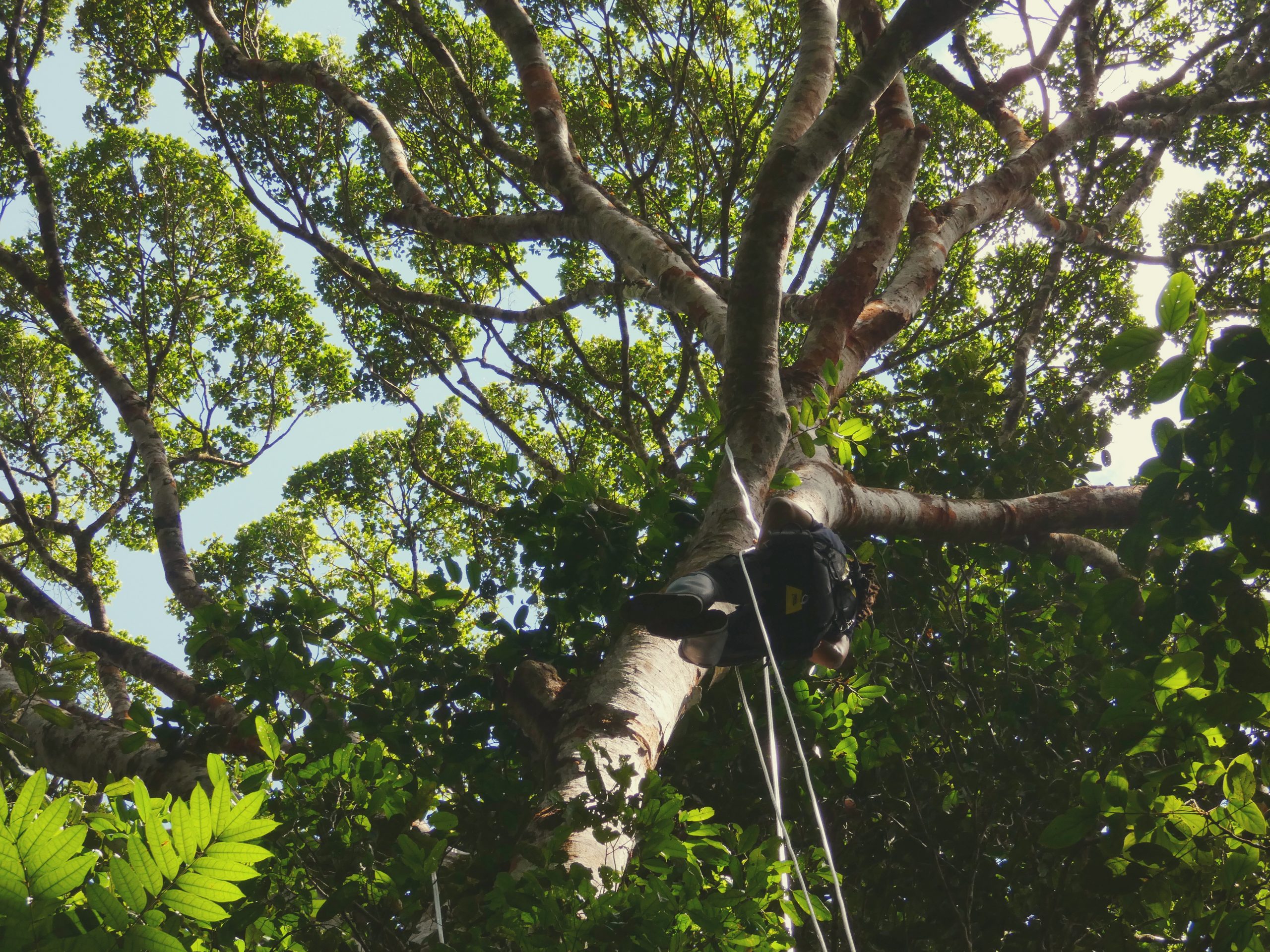
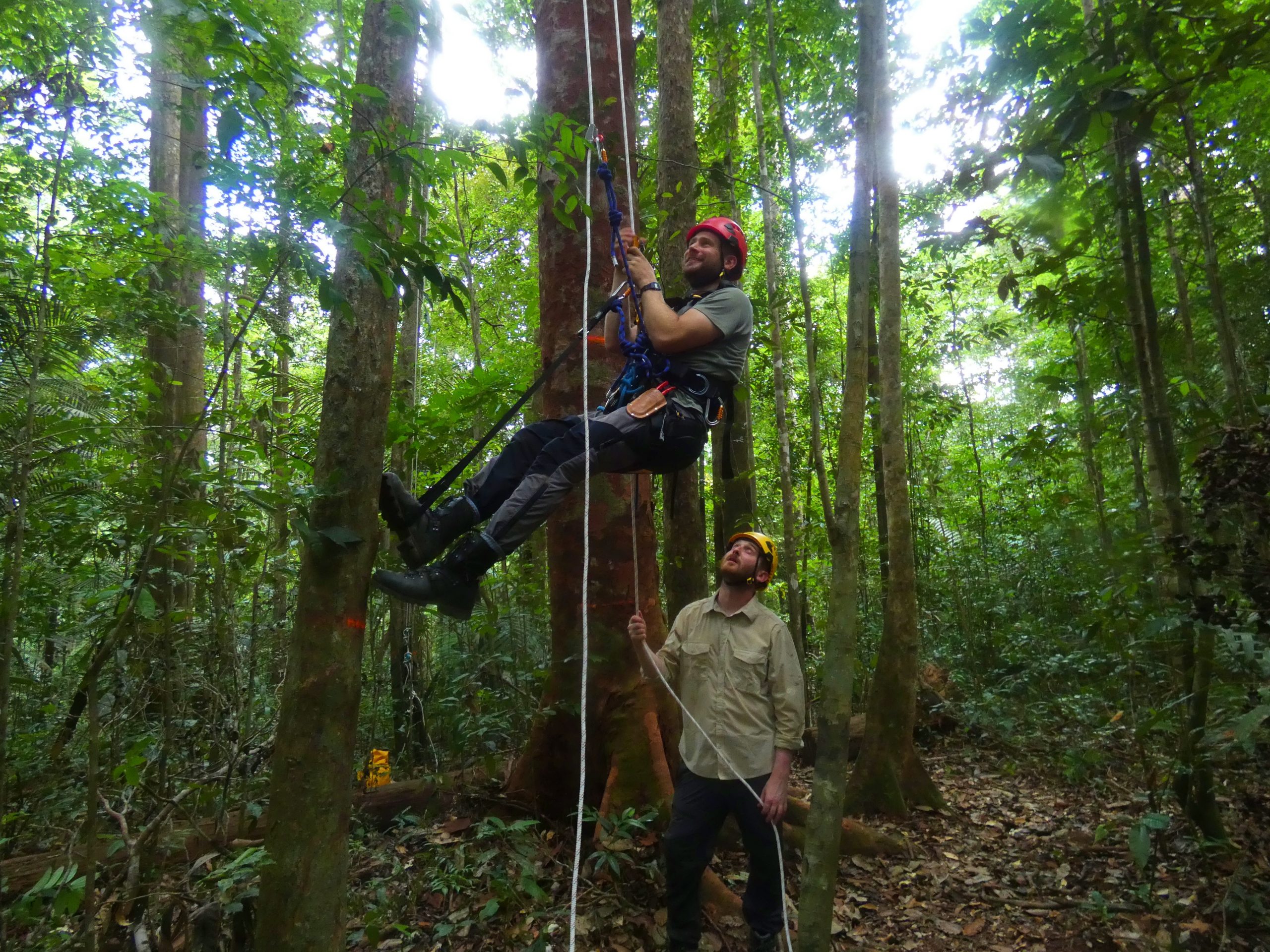
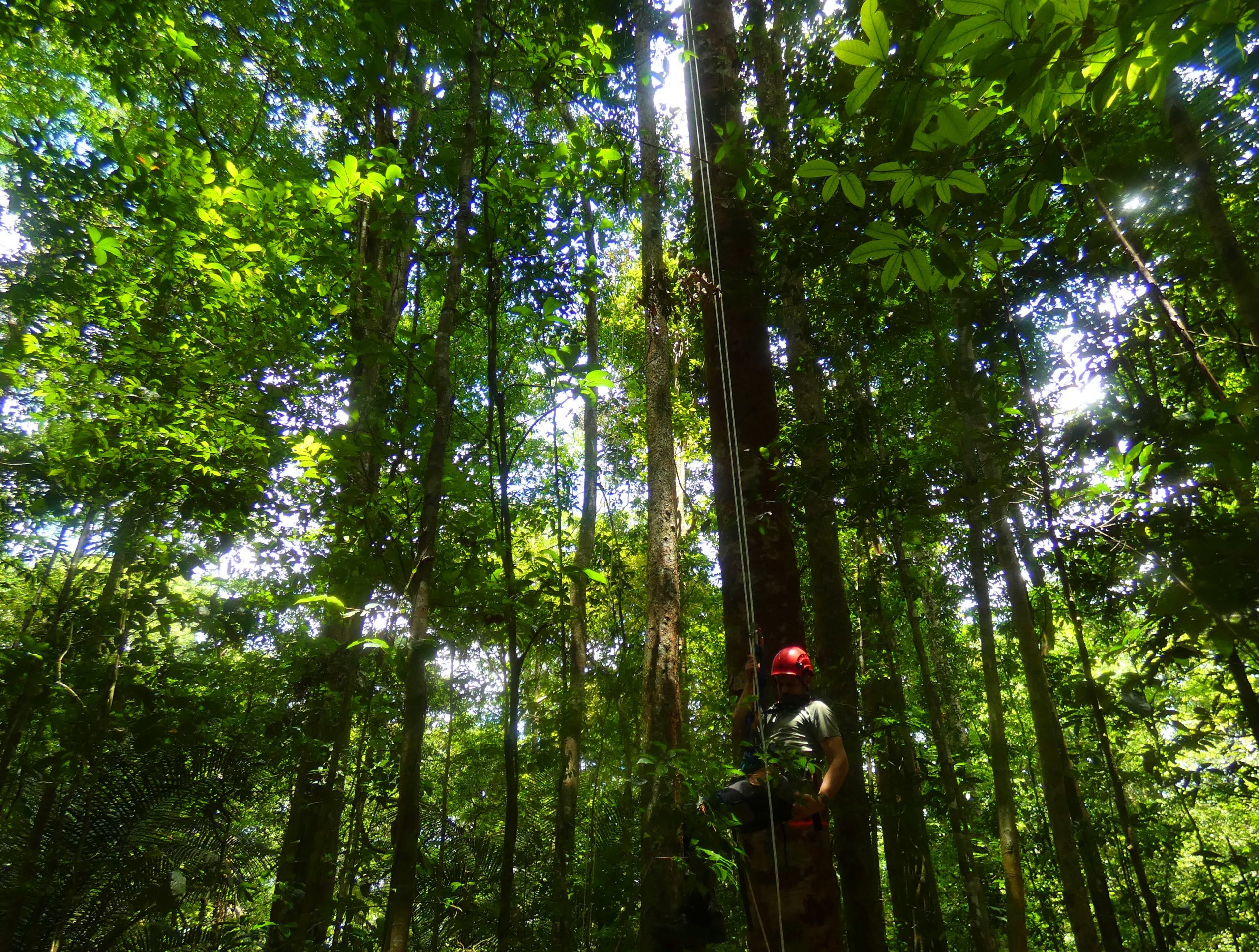
Nouragues
At Nouragues there was a similar set up to Paracou in terms of the plots but where it differed was that it was only accessible by helicopter and, therefore, had a helipad. The helipad was the ideal place to fly the drone, so the majority of the drone flying was done there. There were, however, limitations to this site in terms of how far the drone could go in order to maintain vlos. This limited the number of plots we could fly overall as there were plots too far away from the helipad. To try and increase the number of plots we could study and increase vlos we employed our tree climbing method we tried two things:

The first was to climb a tree that surrounded the helipad to try and improve vlos in a different direction to the flight plans that the drone had been flying, allowing us to increase vlos.
Unfortunately, the canopy on the other side of the helipad was too high and this plan didn’t work too well.
The second option was to climb a tree within one of the plots and fly the drone straight from the forest rather than taking off from a separate location. This was easier said than done, however, and involved a great deal of work including clearing an entire area and building a suitable platform for the drone to take off from. This posed its own set of challenges, however, as the drone had very specific take-off and landing parameters that had to be met before it could be flown. This included needing somewhere flat and large enough to take off and land from and having a clear flight line on take-off and landing without any overhanging trees or other obstructions.
These conditions are rather difficult to come by in the amazon with a densely populated forest but luckily for us we had found a suitable site in the middle of the plot. At this site a massive tree had fallen exposing a large clearing with a suitably open tree line allowing for a clear flight line on take-off and landing… the only problem was there was a tree in the way…
To overcome this, the project lead and I cleared the deadwood, hauled some plywood and tools into the forest, and constructed a platform for the drone to take off from. We then hauled all of the climbing equipment into the forest and rigged up a tree opposite to the platform we had built so that the pilot could have a clear line of sight to the drone while up in the tree. The last step was to get the pilots down and fly the drone!
In the end we were success and were able to rig a tree and fly a drone from the plot!
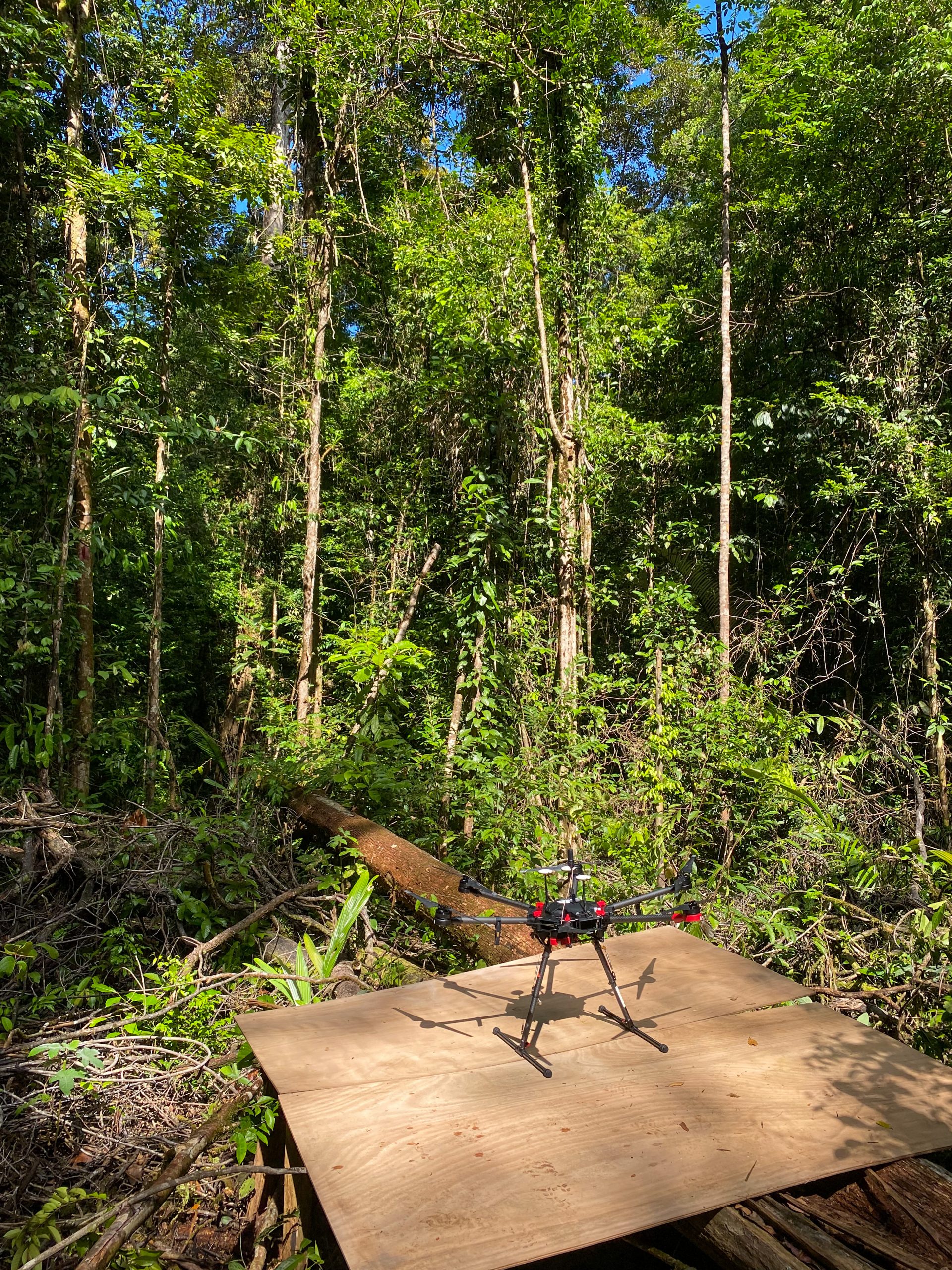
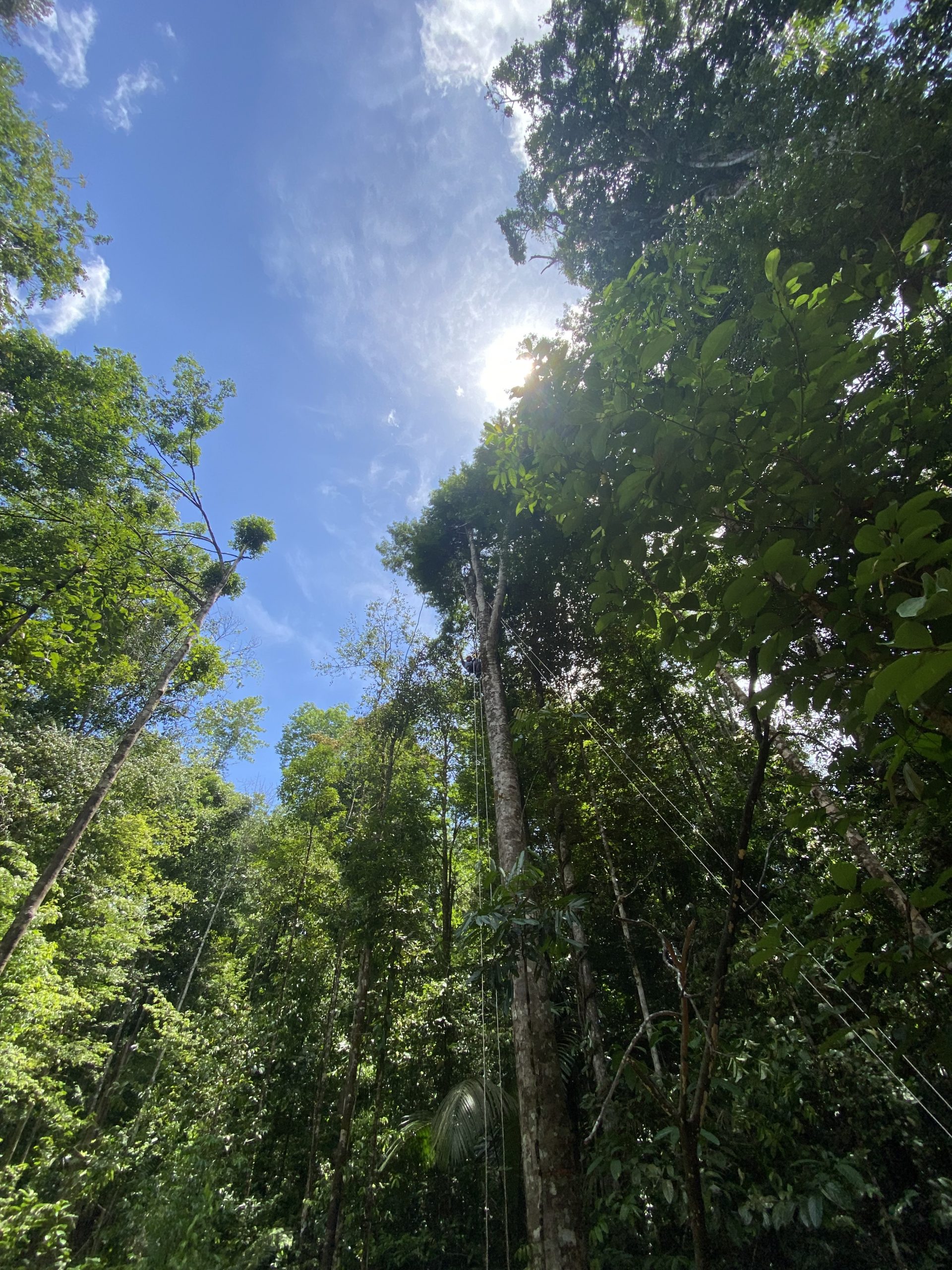
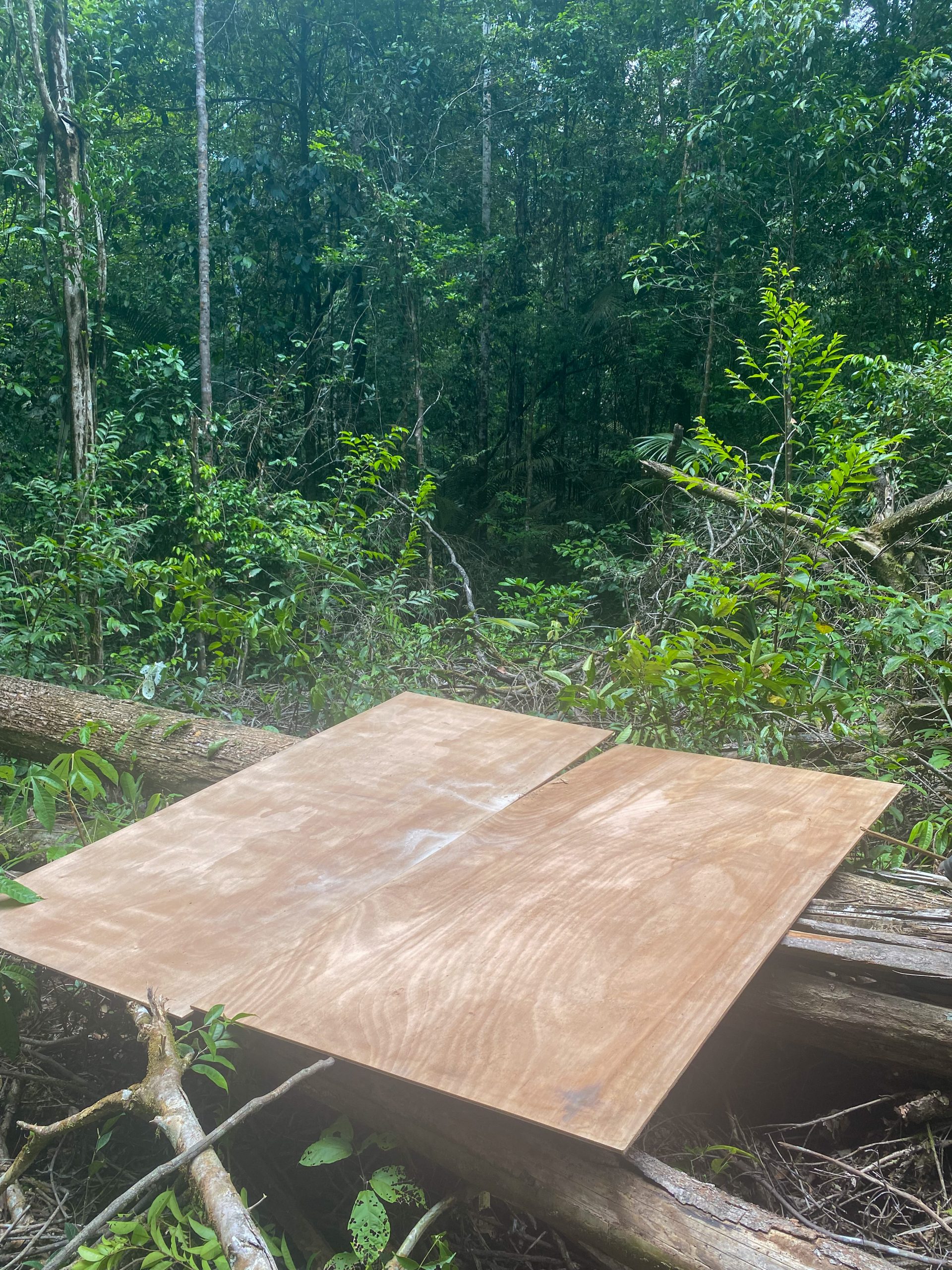
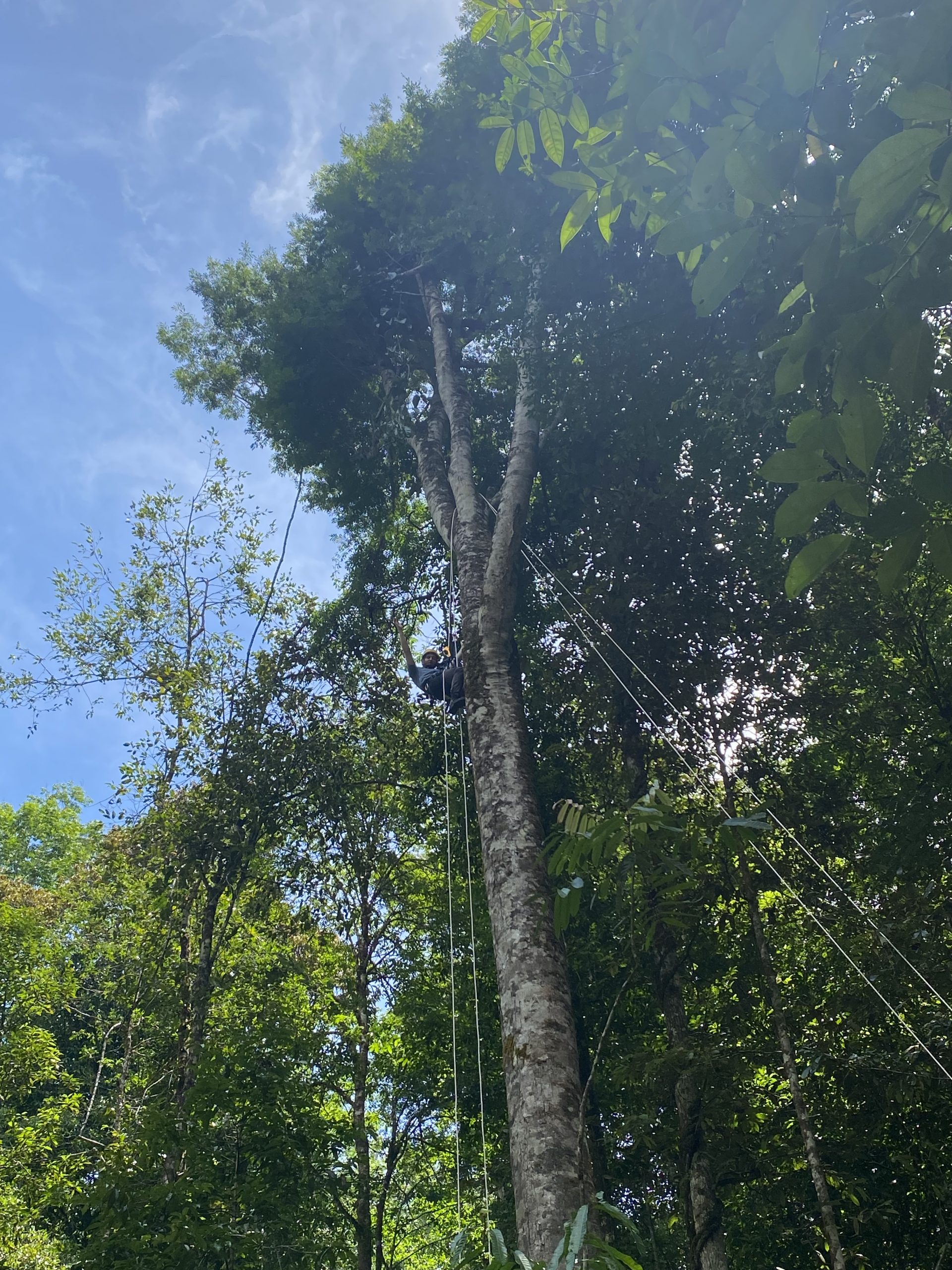
Well mostly… while we were able to fly the drone off the platform in a test flight, due to our location in the forest the drone was unable to pick up on enough satellites to fly safely with the hyperspectral sensor attached to it, so we had to abandon that plan unfortunately. In the end, we had some ideas on how tree climbing could help us fly the drone, came up with a plan, and executed the plan which was a success in and of itself. Lots of lessons learned for the next time.
Final thoughts
If you had asked me at the start of the year what new skills, I was going to learn climbing trees would not have been one of them. Despite this, learning this skill has expanded my view of what is possible and has enabled me to do some really amazing things… such as climbing trees in the Amazon.
From meeting James in Bristol, to climbing and rigging our own trees in French Guiana, this has been a hectic month and a half filled with a lot of new and interesting things and people. I don’t know when next I will be able to use this new skill I have acquired, but I look forward to that opportunity.




